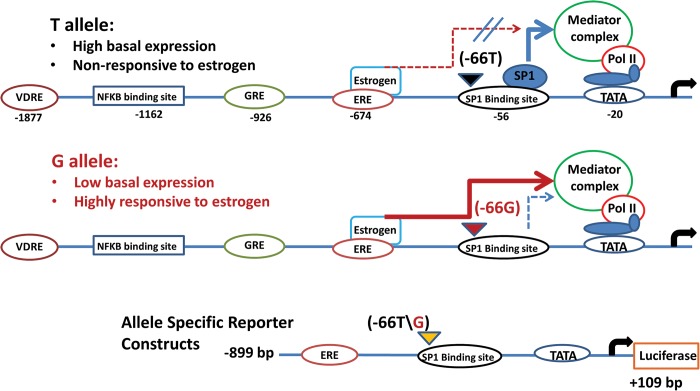Figure 7.
Schematic of the OPN gene promoter structure, and proposed model for effect of genotype on OPN gene expression. The top two lines show the OPN gene promoter structure and proposed model for the allele-specific effects of the rs28357094 polymorphism (−66T, −66G) on transcriptional regulation of the OPN gene. The −66 T allele is shown to have high basal expression, but blocks positive transcriptional response to the estrogen enhancer due to residency of the SP1 transcription factor in the intact SP1-binding site (top line of figure). The −66G allele shows reduced basal expression, but is highly responsive to estrogen due to loss of the SP1-binding site (second line of figure) (3). The predicted enhancer elements are in the more distal regions of the OPN gene promoter (VDRE, vitamin D receptor element; GRE, glucocorticoid response element; ERE, estrogen response element). The lower line of the figure shows the allele-specific reporter constructs used for transfection of human muscle cells. The genotype/phenotype associations of this polymorphism with muscle phenotypes have shown data consistent with a dominant model of inheritance, with two genotype groups (TT and GT + GG).

